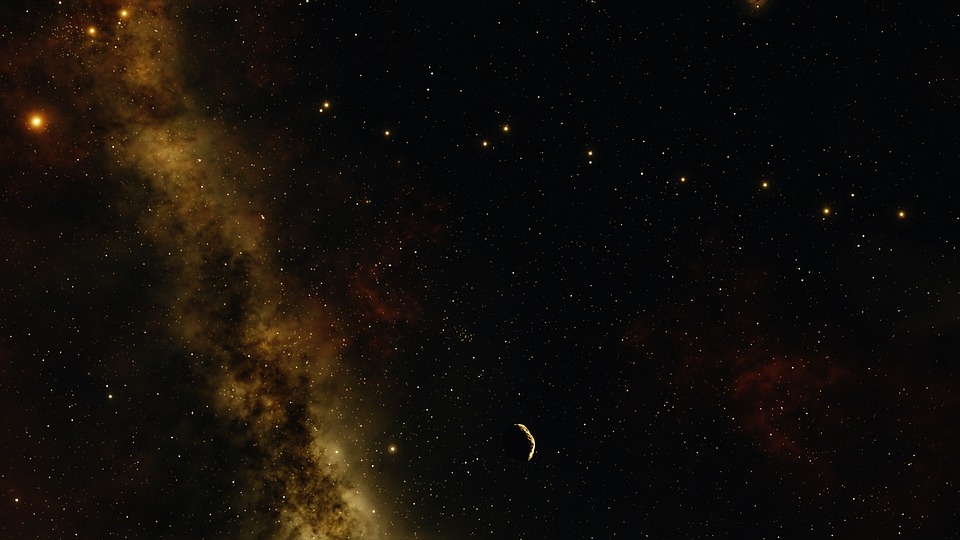US space agency NASA has spotted another asteroid traveling towards the Earth’s orbit. It now bears wondering if the asteroid will make an unexpected entry into Earth any time soon.
Express reports that NASA’s asteroid trackers spotted a space rock, now referred to as 2020 DG1, traveling towards Earth at a speed of 53, 731 miles per hour on a close approach trajectory. Aside from being classified as a Near-Earth Object or NEO, DG1 is predicted to approach the planet by the 21st of February. The space rock measures between 108 feet to 242 feet in diameter, making it a relatively small rock that could only cause damage to the local area it hits if it ever makes it through the Earth’s atmosphere as smaller asteroids usually end up burning up when in contact with the atmosphere.
Asteroids as large as one kilometer in diameter or more would be classified as Potentially Hazardous Objects or PHOs, and are the ones that could cause damage on a global scale.
Fortunately, NASA says that DG1 will only pass by Earth when it arrives on Friday. It will only get as close as 0.03512 astronomical units to Earth. In human terms, this is equivalent to 5.25 million kilometers, which is still very far away, but close enough that space agencies will notice their distance.
Last January, the agency’s Asteroid Terrestrial-impact Last Alert System spotted a space rock that passed by the planet at a much closer distance. Based in Hawaii, ATLAS found that the asteroid, now referred to as 2020 BX12 by the Arecibo Observatory, got as close as 302,000 kilometers, and thus classified it as a Potentially Hazardous Object or PHO.
Researchers from the observatory noticed that this space rock was part of a binary asteroid system, which means one asteroid is orbited by another asteroid. In this case, the main asteroid measures 165 meters in diameter, while the rock that orbits it is smaller, measuring 70 meters in diameter. The researchers also found that these two asteroids have an orbiting time of 45 to 50 hours.
The Planetary Science Radar Group, the scientists running the Arecibo Observatory, announced that even when BX12 can get closer to the planet than the Moon, it does not pose danger at this time and is currently moving away from the Earth.



 Why now is the time to address humanity’s impact on the moon
Why now is the time to address humanity’s impact on the moon  The mystery of consciousness shows there may be a limit to what science alone can achieve
The mystery of consciousness shows there may be a limit to what science alone can achieve  If life exists on Jupiter’s moon Europa, scientists might soon be able to detect it
If life exists on Jupiter’s moon Europa, scientists might soon be able to detect it  The rising flood of space junk is a risk to us on Earth – and governments are on the hook
The rising flood of space junk is a risk to us on Earth – and governments are on the hook  Eggs from men, sperm from women: how stem cell science may change how we reproduce
Eggs from men, sperm from women: how stem cell science may change how we reproduce  How do airplanes fly? An aerospace engineer explains the physics of flight
How do airplanes fly? An aerospace engineer explains the physics of flight  Spacesuits need a major upgrade for the next phase of exploration
Spacesuits need a major upgrade for the next phase of exploration  Could a telescope ever see the beginning of time? An astronomer explains
Could a telescope ever see the beginning of time? An astronomer explains  Six space missions to look forward to in 2024
Six space missions to look forward to in 2024  Alpha, beta, theta: what are brain states and brain waves? And can we control them?
Alpha, beta, theta: what are brain states and brain waves? And can we control them?  Customizing mRNA is easy, and that's what makes it the next frontier for personalized medicine − a molecular biologist explains
Customizing mRNA is easy, and that's what makes it the next frontier for personalized medicine − a molecular biologist explains  Black hole, neutron star or something new? We discovered an object that defies explanation
Black hole, neutron star or something new? We discovered an object that defies explanation  Archeoastronomy uses the rare times and places of previous total solar eclipses to help us measure history
Archeoastronomy uses the rare times and places of previous total solar eclipses to help us measure history  Tatahouine: 'Star Wars meteorite' sheds light on the early Solar System
Tatahouine: 'Star Wars meteorite' sheds light on the early Solar System 































